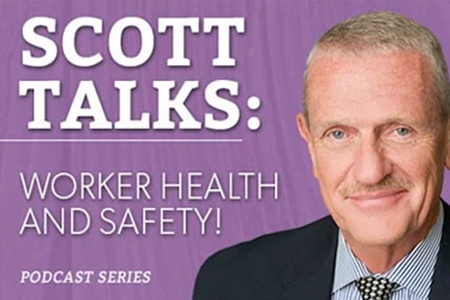Where Can You Find Waste Anesthetic Gases?
Waste anesthetic gases (WAGs) are primarily found in the areas of healthcare facilities where anesthesia is administered such as dental clinics, day surgery facilities, and operating rooms of hospitals. The job classifications of those who may be exposed to waste anesthetic gases may include Anesthesiologists, Dentists, Nurse Anesthesiologists, Operating room personnel including Doctors, Nurses and Technicians, and Recovery Room staff.
These gases can be present due to poor administration procedures, or nonexistent or ineffective ventilation. Even with proper ventilation and scavenger systems in place, employees can still be exposed to WAGs through poor work practices, leaks in the equipment used to deliver the anesthesia and/or equipment that is in poor operating condition, and patient’s exhaling residual anesthesia in Post-Anesthesia Care Units.
Exposure to these gases can result in health effects such as nausea, dizziness, headaches, and more severe long-term effects such as sterility, birth defects, and kidney disease.
The primary waste anesthetic gases that may be found can include nitrous oxide and halogenated agents like sevoflurane, halothane, enflurane, isoflurane, and desflurane. Therefore, it’s essential to conduct regular checks to identify the presence and concentrations of these gases and take the necessary steps to manage and alleviate the risks associated with exposure.
Conducting “baseline” or “initial” rounds of personal exposure monitoring is essential to documenting the potential exposures to those who may be exposed and it is most important to perform full-shift, “personal exposure monitoring”. This effectively involves having the potentially exposed workers wear monitoring equipment that measures their “breathing zone exposure” to determine exactly what they are exposed to for their entire workday, rather than collecting air samples in the room where they work which may yield entirely different results. It is impossible to properly manage waste anesthetic gas exposures if you do not accurately monitor them to ascertain what they are.
What are the Regulations for Waste Anesthetic Gases?
The most obvious regulations that companies need to comply with relative to exposure to WAGs belong to OSHA. Just like many other OSHA regulations for hazardous materials, WAGs are a “group” of chemicals that all have exposure limits within OSHA’s regulations. While not a regulatory requirement, OSHA does recommend that you assess exposures to WAGs, at minimum, every six (6) months to ensure employees are properly protected. There are other guidelines and/or “Best Practice” requirements that may be applicable as well depending on the state where you are located and the type of facility you work in.
As with any Industrial Hygiene issue relating to chemical exposure, the first place to start is with a baseline exposure assessment. This includes a visual observation of the facility to determine the extent to which WAG’s may be present based on ventilation systems and methods of administering Anesthesia that may result in exposure to WAG’s. Based on this assessment, we can develop a baseline exposure monitoring plan to collect breathing zone samples on those workers who may be potentially exposed and determine exactly what their 8-hour exposure is. Based on the results of the monitoring, we can help with mitigation plans or make recommendations for better procedures to minimize exposures in the first place.
Organizations that fail to meet any of these standards may face penalties and citations as the result of OSHA inspections or, may be found to be deficient in terms of their facility’s accreditation. Although it is important to make sure you comply with all necessary regulations, it is more important that you are providing a safe place of employment for your staff.
How to Address Waste Anesthetic Gases
To learn more about our Health & Safety Consulting and how we handle Waste Anesthetic Gases, fill out this form:


